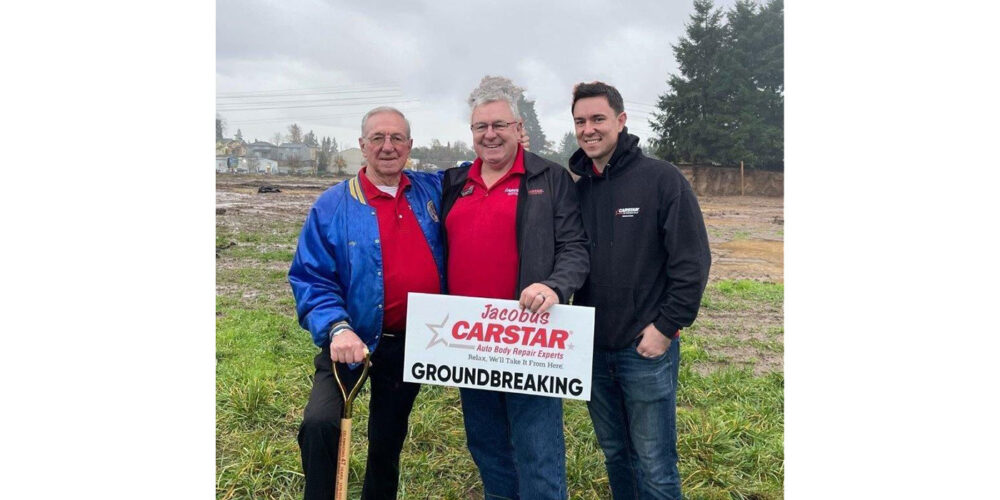I’ve been in the collision repair industry for 21 years, and one challenge that’s a constant is effectively scheduling production staff. Scheduling in this business is difficult because you have different repair jobs coming in every day and no two jobs are exactly the same – so you can’t follow a standard scheduling method that will apply to all repair jobs. To make matters worse, you can’t anticipate how many jobs you’ll get on a particular day, so even though your schedule may seem manageable one day, the next day you could get new business that may require you to modify your schedule. But if you overschedule your staff to accommodate heavy volumes, then there will be cycle time delays, missed delivery dates, lower quality repairs, overstressed staff members and increased costs for rental cars. On the other hand, if your staff is underscheduled, the shop risks losing good production employees.
Not much of a choice, is it?
So how do you schedule production staff effectively? I’ve worked for CARSTAR for more than a decade, and we’ve handled scheduling challenges by:
- Determining your shop’s production capacity.
- Creating a consistent workflow throughout the work week.
- Scheduling tow-ins.
- Scheduling sublet repairs.
1. Determining your shop’s production capacity.
To do this, you must first identify which production department is the bottleneck. Your general manager can assess what the weakest production department is by looking at historical data, such as how many hours employees have produced per week and how many jobs were completed on time.
Next, you should determine the capacity of the department causing the bottleneck. If your shop has a management system, then you have access to efficiency reports that will help you determine each department’s capacity. You can also look at payroll records. Due to workflow variances, I recommend that you examine 180 days of historical data. After establishing the capacity of the weakest production department, you can determine the hours per day to schedule for that department.
For example, if the bottleneck occurs in the paint department, you must schedule according to the production capacity of the paint department. If that department’s capacity is 200 hours per week in a five-day workweek, then you can only schedule 40 hours per day for that department. The other departments will fall in line from there. However, if one department is consistently holding up overall productivity, then you need to study that department and develop a plan to improve it.
2. Creating a consistent workflow.
Once you know your production capacity, you need to schedule the same number of hours each day. Inform your estimators that they can only schedule a certain number of hours per day, and ask them to maintain a mix of small, medium and large jobs so each day is balanced. You can also build in a few extra hours of labor to larger jobs and anticipated delays, so that if problems occur, you’ve scheduled time to remedy the problem.
Another option is to split shift some of your production staff. For Bob Waldron, owner of Waldron’s CARSTAR Auto Body in Marlboro, Mass., and Lancaster A-1 A B CARSTAR in Lancaster, Mass., changing his paint department to a split shift has resulted in less scheduling problems and more satisfied customers.
“Scheduling my paint department effectively was a challenge for me, and I recognized that I needed to make a change to ensure that my customers were getting their vehicles delivered on time,” says Waldron, who split shift his paint department on Tuesdays, Wednesdays and Thursdays because those were the busiest days of the week for production. “I have a painter coming in at 6 a.m. and working until late afternoon and another painter arriving around 4 p.m. and working until midnight. This split shift has significantly decreased my paint department bottleneck, and vehicles are ready for delivery on their promised due date.”
Your estimators should also suggest that customers bring in their vehicles on Tuesday through Friday, instead of recommending a Monday drop-off (since Mondays are almost always overscheduled days). Many shops still follow the “in on Monday out on Friday” method because that’s the way they’ve always done it. Other shops schedule vehicles to be brought in on Mondays in an attempt to prevent customers from having to keep a rental car over a weekend. Some jobs, however, require a weekend stay, so it’s better to schedule those jobs later in the week to help workflow. Also be sure to discount hours scheduled during holiday weeks and when your production staff is on vacation.
3. Scheduling tow-ins.
When a tow-in is brought to a shop, it often sits in the lot until there’s an opening in the schedule to work it in. Not very efficient. What you should do is this: Once you have authorization to repair from the vehicle owner, order the necessary parts and schedule the work for the day the parts arrive. That way, when the parts are in, you’ll have production staff ready to begin the repair.
4. Scheduling sublet repairs.
When a vehicle requires a sublet repair, be sure to schedule time for the outside vendor to come to your shop to do the repair or for the vehicle to be transported to the vendor’s facility. It’s ideal if you can schedule the sublet repair while you’re waiting for parts to come in. If, however, you have to repair a portion of the vehicle before the sublet repair can take place, then schedule the work accordingly.
Handling Customers Who Want Fast Service
What if the customer demands a speedy repair? Even if you follow four tips I mentioned, you may still encounter instances where the customer demands a faster-than-average turnaround. Instead of overscheduling your production staff to accommodate this customer’s demands, consider making a temporary repair until a full repair can be scheduled. Depending on the nature of the repair, you may be able to offer a quick repair to the customer to satisfy his immediate concerns. For example, if the vehicle is drivable but the customer can’t open the driver’s side door, then offer to repair the door so it’s functional. If a headlight has been broken, repair just the light so the customer can drive in the dark.
If a partial repair isn’t an option, then you need to be honest with the customer and let him know what date you can schedule the repair. You can also offer to call him if time opens up and you’re able to fit him in sooner than planned. Another option: Ask members of your staff to work overtime to get caught up.
Analyzing Productivity
If you’re consistently backlogged, you likely have a more serious problem that needs addressed and should examine your employees, your equipment, and the design and layout of your facility to determine exactly what that problem is.
1. Examine your production staff. Do you have the right personnel in place?
“You must evaluate the efficiency of each of your employees to see if they’re producing quality work while contributing to the profitability of your store,” says Dave Rush, owner of D & M Auto Body CARSTAR in Rockaway, N.J. “And once you have a team of skilled, efficient employees, make sure you work to keep them.”
Rush suggests regularly offering monetary incentives to employees as well as team building activities to help improve employee retention.
You should also assess whether your production team is properly trained. If you have a highly productive piece of equipment but your employees don’t know how to use it, then you clearly aren’t getting any return on your investment. Training your production staff should always be a priority.
2. Look at your shop’s equipment. Several factors need considered: Is your equipment state-of-the-art or several years old? Do you have enough equipment? Is there always someone waiting for the frame machine? Do you need another machine or maybe a more productive measuring system? CARSTAR has found that paint booth capacity runs about $200,000 per month. Is your shop’s booth operating at this capacity? If not, why isn’t it?
3. Consider your shop’s design and layout. Question whether your productivity would improve by relocating a piece of equipment in your facility or if it would be possible to add an overhead door to gain better access to one of your departments, etc. Also ask yourself if your shop space is too small for the business you receive. You need to periodically evaluate the layout of your shop to discover better ways to use your space.
Adopting a Systematic Approach to Labor
To run a successful collision repair business in today’s demanding marketplace, you need to take a systematic approach to everything you do – including scheduling. Labor is the commodity you sell with the highest gross profit – and you also have the greatest control over it.
But you have to exercise that control. If you don’t properly schedule labor, you risk angering your customers because you won’t complete their vehicles in a timely manner and you’ll frequently miss delivery dates. These slowdowns and broken promises lead to low CSI ratings and, ultimately, to lost business.
Whether you use the system I discussed here or you come up with your own, use it faithfully. You’ll need to consistently review and revise your capacity numbers because as you improve, systems efficiencies will also improve – and so will your shop’s productivity.
Writer Bob Keith is CARSTAR Manager of Production Training.













